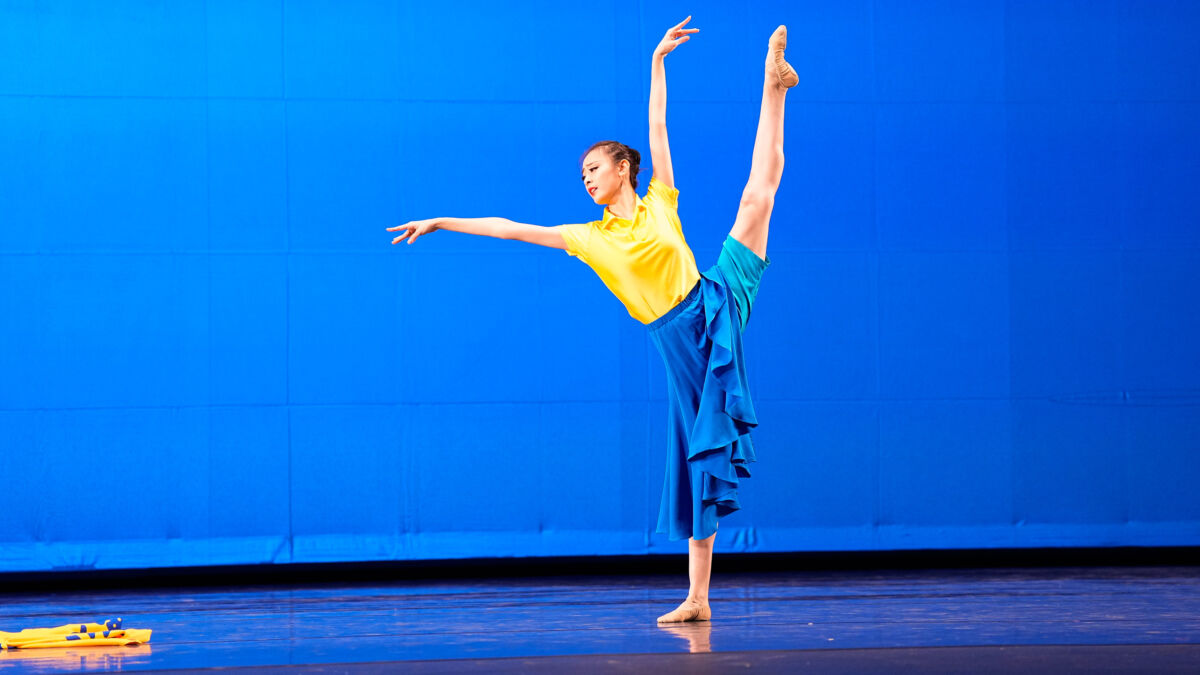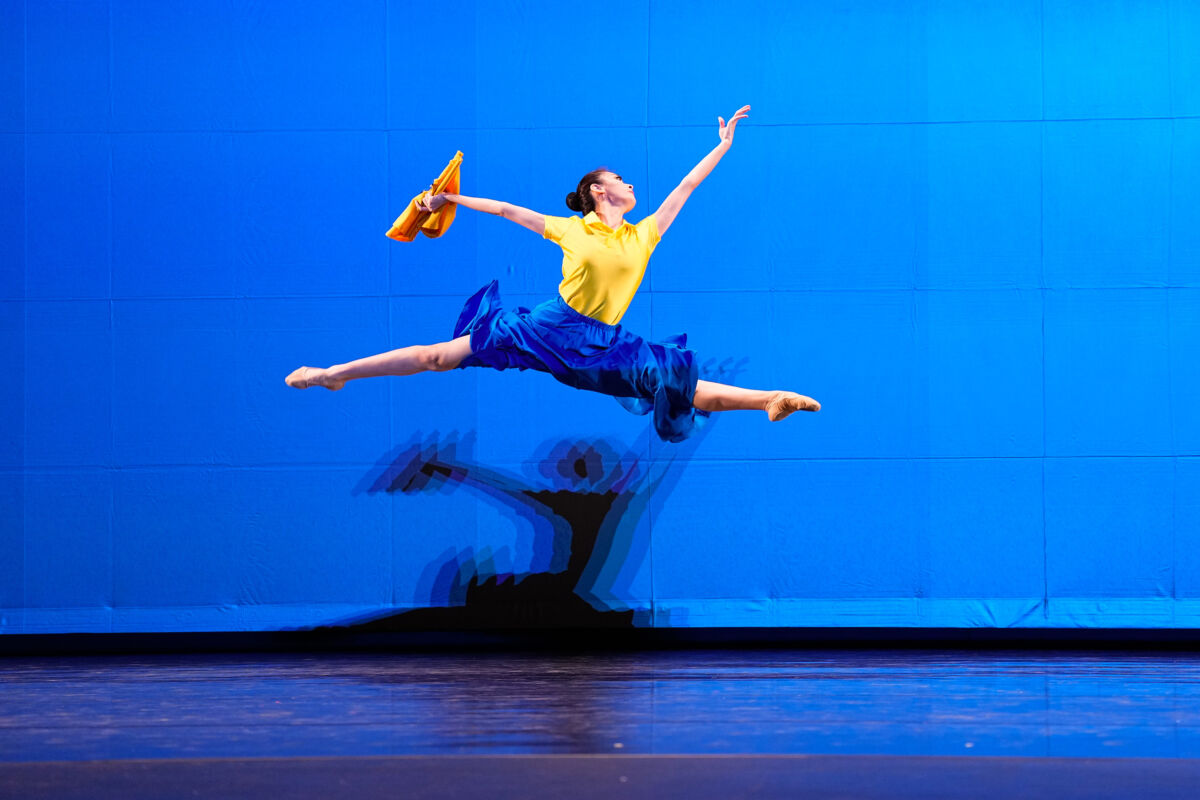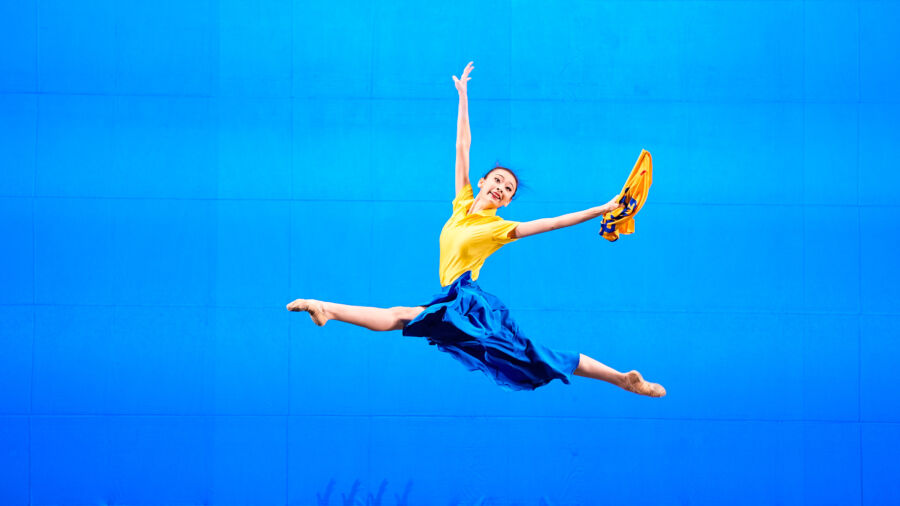Carol Huang, two-time Gold winner of the junior division in the NTD International Classical Chinese Dance Competition, won the gold award again participating in the adult division for the first time this year.
“I don’t think about the placements,” she said, “that’s the wrong focus.”
Ms. Huang is an accomplished artist, a principal dancer at Shen Yun Performing Arts, the world’s premier classical Chinese dance company. Her reason for entering the NTD competition was the same as many of the dancers present: to improve themselves and deepen their understanding of dance.
This year, she performed “Faith,” a narrative dance about a Falun Dafa practitioner in China.
Falun Dafa, also known as Falun Gong, is a spiritual practice that teaches the three principles of truth, compassion, and forbearance. It was introduced to the public in the 1990s, and within the decade spread widely via word of mouth. By 1999, an estimated 70 to 100 million people were practicing Falun Dafa in China, when the Chinese Communist Party (CCP) launched a persecution campaign to “eradicate” the practice with the entire force of the state apparatus.
Most of the adherents would not give up their faith. Rather than be cowed by the slander and violent persecution, grassroots efforts and stories of courage emerged wherein Falun Dafa practitioners clarified the truth about what they believe to the people of China.
“I didn’t base my character on any specific person,” Ms. Huang said. “What I wanted to portray was any Falun Dafa practitioner who lives under the pressure of the CCP’s persecution. When they go out to clarify the truth to others, they must feel some sort of fear.”
“I wanted to show how they overcome their fears and courageously step forward to tell the world’s people the truth about Falun Gong, how they transcend their own fears and various worries to do so,” she said.
“This is a very meaningful piece, to be able to, though this competition, tell a lot of people the truth about Falun Dafa,” said Ms. Huang, who practices Falun Dafa.
Body Language

One of the things judges looked at was the dancer’s use of “shen dai shou” (body leading the hands) and “kua dai tui” (hips leading the legs), a method of movement which has been pioneered by Shen Yun dancers under the direction of Artistic Director D.F.
A result of using this method is longer, grander movements, and amplified expression.
“If you want to portray a character, you need to use their emotions to flesh out that character. And then if you use your body to express those feelings you want to convey, it’ll come across very clearly,” she said.
“Like in my piece; when people are scared, they shrink in fear,” Ms. Huang said, demonstrating her posture in the dance. “Your body caves and contracts like this.”
“But when you stand with faith and righteousness, your posture and body language is open and bright,” she said, showing the vast difference conveyed through the simple change in posture. “Your body can help you express this very clearly.”
“Your mind, your intention has to constantly be on your body. Dancing is not just about moving your arms and legs,” she said. “Your body is your whole center of your person. If you use your body to express something, you express it that much more clearly.”
Shen Yun has been using this method for several years now, and it has set a new standard for classical Chinese dance internationally.
“It’s not that if you’re older or more experienced you can get this method better; a lot of the junior division dancers have been doing it really very well. The main thing is still a matter of effort, of whether you’ve put your heart into it,” Ms. Huang said.
“Overall, you can see that everyone’s skills and artistry are really high this year, dancers have improved in all aspects. I think this can only improve every year going forward,” she said of the competition. “I think actually those who made it into the preliminaries are already incredibly skilled, everyone here is incredible.”
A Higher Art

Dance can be an arduous journey, Ms. Huang shared, but a lesson she’s learned is that you have to keep a positive heart.
“In art, as in life,” she said, “when you mend your problems you improve—both morally and physically.”
It’s what she strives for personally as an artist, and as someone who follows the principles of truth, compassion, and forbearance as a Falun Dafa practitioner.
“I think truly good art can evoke kindness in people’s hearts,” Ms. Huang said. “It’s not just entertainment that serves as a diversion which lasts the duration of a performance. It can give someone a lasting impression, and positive influence.”
Having experienced traditional culture, they have the opportunity to see a positive vision of human culture. “They’ll think about it afterwards,” she added. “What kind of culture is a good culture?”
From The Epoch Times

